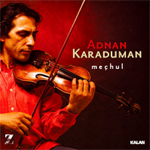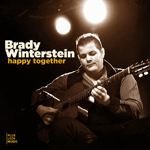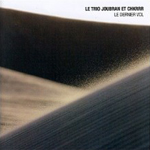This review page is supported in part by the sponsors whose ad banners are displayed below |
 |
 |
My iMac lives on the sidewall and I don't possess a 6-meter digital interconnect. To conveniently compare the Norma and Resolution Audio stacks I moved in an AIFF-loaded 160GB iPod on a Cambridge Audio iD100 digital dock. This could sit right with the electronics on the rack between the speakers. The digital cable was an AES/EBU 110Ω Pro from Van den Hul as the superior-sounding option over coax. Having the Cantata gear stacked I could also use the included link cable which wouldn't have spanned the six meters. By depressing the chosen input for five seconds, its display letter turns capitalized and the Music Center to fixed mode. Now volume control is handled exclusively by the amp though each volume change still displays also on the source in case the amp installs concealed.
If you're a sub user, the Resolution twins don't very conveniently account for it. Whilst you could use the RCA out of the source which connects XLR to the amp, you couldn't install the Cantata link. And that quickly gets messy when each remote volume change triggers both machines. With its banana-only terminals the amp doesn't lend itself to a high-level connection unless you had a banana-terminated biwire cable (and a low-level connection really is preferable).
|
 |
The capital 'A' on the amp display signifies how that input is slaved to the Music Center.
|
 |
This comparison now honed in on other aural attributes of the Californian gear.
It's a popular sentiment that a small high-revving engine responds better in normal traffic than a lumbering big one unless you meant to tow a horse trailer, zip up a mountain pass or do tight takeovers at already high speed. It's academic whether the presumed reasons behind such an observation apply directly to small versus big amps. On small voltage modulations the C50 simply was more trigger happy to exhibit greater microdynamic nuance. This became particularly relevant during low-level sessions where one still expects the full range of dynamic motion simply diminished in breadth but not in intermediary values. Despite moving closer together those values should remain distinct, not blur or clump. Here Resolution Audio was more nimble and discerning than the fatter Norma. |
|
|
|
|
|
| This was noteworthy on my favorite violin album, Adnan Karaduman's Meçhul. Its many small tendrils of bow pressure inflections were more teased out and lively, quite as though things came on song sooner and got twitchy quicker. By the time I did ultra-minimalist ambient fare like Greek film composer Yiorgos Magoulas' Dust which like an evaporating dream is most immaterial stretched across lazy decays and electronic noises, this ability to drill down deeper into ephemeral substance made quite a difference. The American stack was an earlier riser with a workout and cuppa java already behind it. |
|
|
|
 |
| |
 |
Though actually thicker, the Italian take felt further set back because dimensional sculpting was in shallower relief. This didn't affect the general front/back perspective and its layering. The hit was to surface textures, be that Brady Winterstein's guitar on Happy Together or Aytac Dogan's quicksilvery qanun on Taksim Trio 2. Some of this was related to a different treble quality. Here the 2MHz Norma gear acted like soundkaos' Raal ribbon - ultra-fine and as such the closest thing to not being there as anything mechanical. In the same way the Resolution kit was a Beryllium or diamond tweeter. It had more obvious sparkle. This combined better with the carbon-fiber German Physiks driver and the silk-dome tweeter of the Rhapsody 200. It's when I added the Sopranino ESL super tweeters to the latter that Norma's top end came out ahead for my tastes. |
|
|
| To Resolution's virtue list we thus add very good low-level visibility. This counts double, once for an early wakeup call on the dial, twice for extricating the very fine dynamic ripples that play across music's surface. A visual that presented itself during listening was that the Norma presentation felt like a solid sheet of falling water. Resolution's waterfall meanwhile hit intermittent rocks from which water drops sprayed in numerous directions. As the literally bigger engine, one naturally expects superior macrodynamics from the Norma. My townhouse ambitions were simply better served by the faster-peaking higher redline of the small amp. The Norma took a Humvee to do groceries. |
|
|
| |
|
 |
A perhaps better way to clarify this difference is amplified vs. acoustic sound. Amplified sound plays to a bigger venue than the performers' unassisted output could fill for the audience in the farther rows. This compensation to play bigger than natural fundamentally alters things. In trade for louder and massier some of the litheness and harmonic finesse unplugged instruments have when playing an appropriately sized venue get sacrificed. With the C50 fed balanced being plenty loud for my venue—I tended to peak at ~40 on the dial—its overall balance and vitality were rather more unplugged than the wall-of-sound type IPA-140. |
|
Opera lovers will vehemently disagree but this is at the heart also why modern operatic voice sound so categorically unnatural. They must overpower a large symphony orchestra and fill often very large halls. Compare an operatic voice to a lieder singer and this difference is as plain as is which of the two the C50 would be.
|
|
|
|
| Conclusion. The Cantata twins have uniquely contemporary looks and great functionality. I loved their very legible white displays which can be dimmed in stages or extinguished altogether. Sonically they made for very color-intense microdynamically astute sound that was gifted with rippling reflexes. For a demonstration of the latter check out the transient violence which those reflexes unleash on Omar Bashir's "Longa Blues" from The Crazy Oud. Olé and Amen (to steal from Pitingo's album of that name). This teaming up of great tonefulness, hot rather than muted colors, incisive transients and microdynamic charge is often mutually exclusive. That it translated likewise to vocals was shown on the same recording when Iranian singer Farida tears into Muezzin-flavored quasi Flamenco improvisations to raise hackles whilst exorcizing flagging and otherwise evil spirits. |
|
|
If my review brushed over the Music Center source component, that was by design. It's been covered extensively before. Perhaps also because I've heard plenty of great digital of late from Metrum's Hex to AURALiC's Vega to Meitner's MA-1, I felt particularly inspired by Resolution Audio's C50 integrated. Its virtues shone regardless of source. To me it would actually seem to be the hotter buy of the two. Despite its class A/B nature it runs quite hot but then so does its sound. I took it as another less-is-more confirmation of a very simple two-stage circuit with a single pair of p/p output Mosfets per channel plus a super-tweaked feedback loop going places where many muscle amps cannot. If your speakers don't come on song with 50 watts per side, you simply have got the wrong speakers for the Resolution amp, sorry ... |
|
 |
 |
|
 |